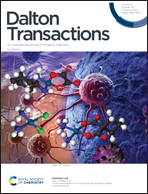Design, synthesis and evaluation of liver-targeting fluorescent probes for detecting mercury ions†
Abstract
Three fluorescent glycosyl-rhodamine probes with good selectivity and sensitivity toward Hg2+ were developed. The detection limit of the probes toward Hg2+ is as low as 94.6 nM, which can be used to detect trace Hg2+ in solution. 1 : 1 stoichiometry was the most possible recognition mode of the probes toward Hg2+, and the OFF/ON mechanism of the probes toward Hg2+ could be attributed to the closing or opening of the rhodamine spiral structure caused by Hg2+. The detection of Hg2+ is reversible, which is beneficial for the recycling of probes. Moreover, these low cytotoxic probes can be safely and selectively applied to monitor Hg2+ levels in hepatocytes, and the fluorescence response follows a trend of Rho-Gal > Rho-Lac > Rho-Glu in HepG2 cells because the galactose group in Rho-Gal can selectively recognize ASGPR overexpressed on HepG2 cells.



 Please wait while we load your content...
Please wait while we load your content...